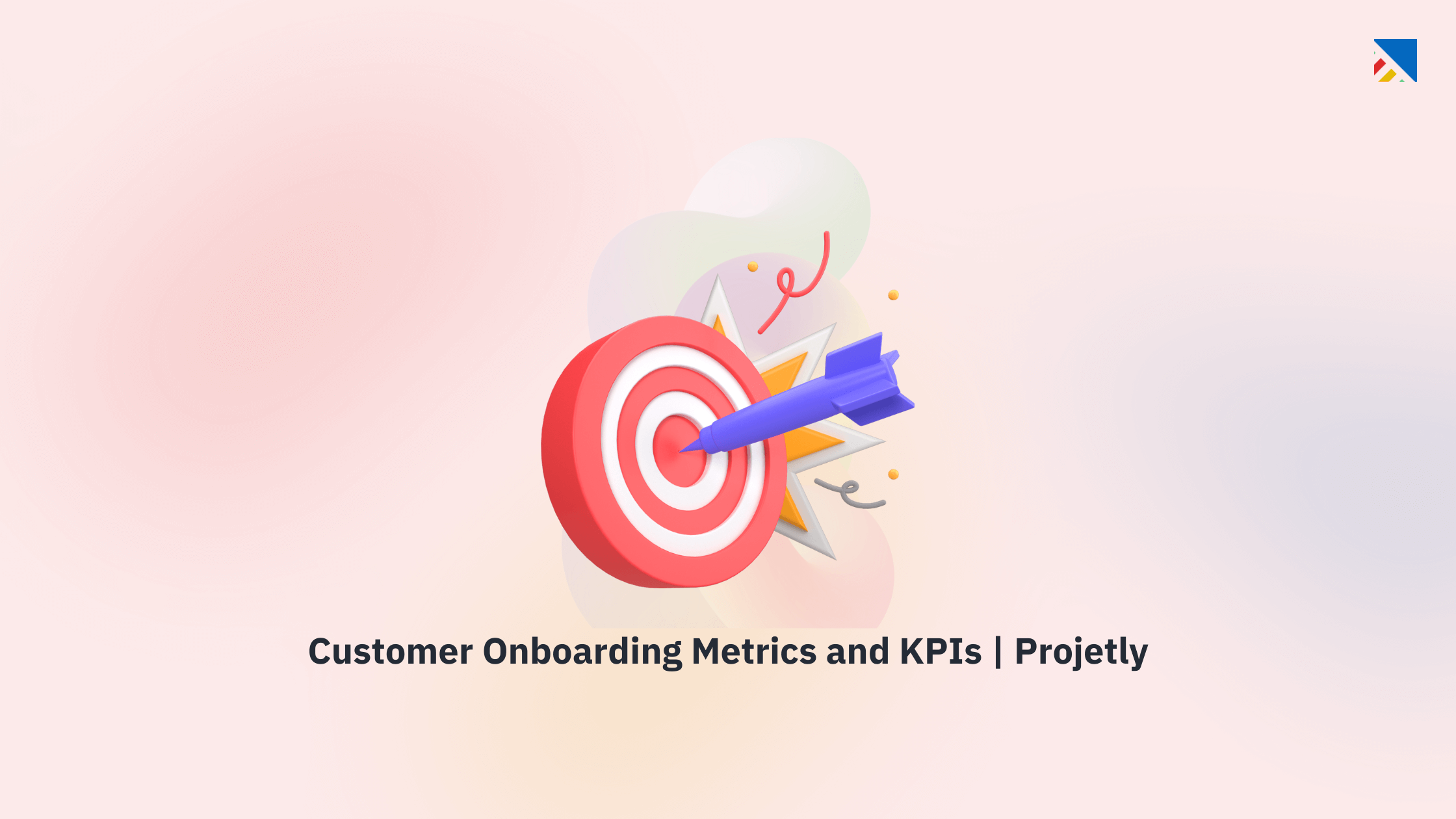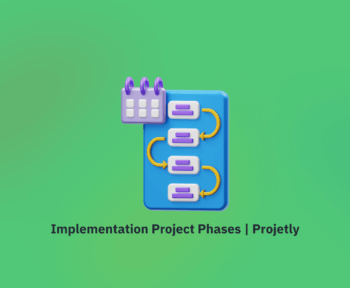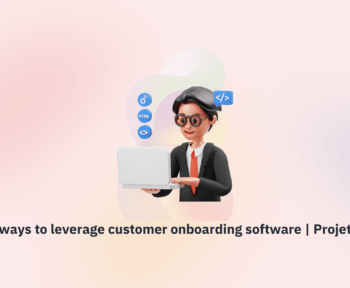Introduction
Customer onboarding is a critical phase in the customer journey. It sets the tone for the customer’s relationship with your product or service. A smooth onboarding process necessitates tracking specific metrics and key performance indicators (KPIs). Here, we’ll explore the most critical customer onboarding metrics and KPIs and how to track them effectively.
Table of Contents
The Significance of Measuring Customer Onboarding Metric for Success
Embarking on measuring customer onboarding success is a transformative decision that unlocks a wealth of benefits for your business. By consistently tracking and analyzing relevant metrics, you gain invaluable insights that empower you to:
- Identify Friction Points: Pinpoint areas within your onboarding process where customers may experience frustration, confusion, or disengagement. This will enable you to address these issues and streamline the journey proactively.
- Enhance Customer Retention: Optimizing the onboarding experience increases the likelihood of customers remaining engaged with your product or service, fostering long-term loyalty and reducing churn.
- Foster Stronger Relationships: Measuring customer onboarding success allows you to identify opportunities for personalized engagement, nurturing stronger connections with your customers from the beginning.
- Prioritize Resource Allocation: With data-driven insights, you can make informed decisions about where to allocate resources, ensuring that your efforts are focused on the areas that yield the most significant impact on customer satisfaction and retention.
- Drive Continuous Improvement: By consistently monitoring and analyzing customer onboarding metrics, you establish a culture of continuous improvement, enabling your business to adapt and evolve in response to changing customer needs and market dynamics.
Essential Customer Onboarding Metrics And KPIs And How To Track Them
While every business and industry may have unique nuances, several fundamental customer onboarding metrics are beacons for measuring success. Let’s explore these essential metrics and their significance.

1. Time to First Value (TTFV)
Definition: The time it takes for a new customer to experience the first value from your product or service.
How to Track: Measure the time from signup to the first significant action (e.g., first purchase, first use of a critical feature). Tools like customer analytics platforms or CRM systems can help you track these events and calculate the TTFV.
Why It Matters: A shorter TTFV means customers quickly realize your product’s benefits, which can lead to higher satisfaction and retention rates.
2. Customer Activation Rate
Definition: The percentage of new users completing the critical steps of the onboarding process.
How to Track: Using product analytics tools, identify critical onboarding actions and track the percentage of new users who complete them.
Why It Matters: High activation rates indicate that your onboarding process effectively guides users to essential features, leading to better engagement.
3. Onboarding Completion Rate
Definition: The percentage of users who complete the entire onboarding process.
How to Track: Monitor the number of users who finish all onboarding steps divided by the total number of new users. Use funnel analysis to identify drop-off points.
Why It Matters: A higher completion rate suggests your onboarding process is user-friendly and comprehensive.
4. Feature Adoption Rate
Definition: The percentage of new users who start using specific product features within a certain timeframe.
How to Track: Analyze user activity logs to see how many new users engage with critical features. Tools like Mixpanel or Amplitude can help with this.
Why It Matters: Understanding which features are adopted can help you focus on improving those that provide the most value to customers.
5. Customer Retention Rate
Definition: The percentage of new customers who continue to use the product after a certain period.
How to Track: Track the number of active users after a specific time (e.g., 30, 60, 90 days). Cohort analysis can be helpful for this purpose.
Why It Matters: Retention is a crucial indicator of long-term success and customer satisfaction.

6. Churn Rate
Definition: The percentage of new customers who stop using the product within a specific timeframe.
How to Track: Measure the number of users who cancel or stop using the service divided by the total number of new users. Subscription management systems or analytics tools can track this.
Why It Matters: A high churn rate can indicate problems in your onboarding process or product offering.
7. Customer Satisfaction Score (CSAT)
Definition: A measure of how satisfied customers are with the onboarding process.
How to Track: Conduct surveys or feedback forms post-onboarding to gauge customer satisfaction. Use tools like SurveyMonkey or Google Forms to collect and analyze responses.
Why It Matters: High satisfaction scores indicate that your onboarding process meets or exceeds customer expectations.
8. Net Promoter Score (NPS)
Definition: A metric that measures customer loyalty and their likelihood to recommend your product to others.
How to Track: Use surveys asking customers to rate their likelihood of recommending your product on a scale of 0 to 10. Tools like Promoter.io or Delighted can automate this process.
Why It Matters: A high NPS suggests that customers are happy with their onboarding experience and are likely to become advocates for your brand.
9. Support Ticket Volume
Definition: The number of support requests or issues new customers raise during onboarding.
How to Track: Monitor and analyze new users’ volume and types of support tickets using customer support software like Zendesk or Freshdesk.
Why It Matters: High support ticket volume may indicate that your onboarding process needs to be clarified or that there are issues with your product.
10. Training and Documentation Usage
Definition: The extent to which new users utilize training resources and documentation.
How to Track: Track engagement with onboarding materials, such as tutorial videos, help articles and FAQs. Tools like Wistia or Google Analytics can help you measure usage.
Why It Matters: High usage rates suggest your resources are valuable and helpful to new users.

11. Engagement Metrics
Definition: Metrics that show how actively new users interact with the product.
How to Track: Use analytics tools to monitor login frequency, session duration, and actions taken within the product.
Why It Matters: High engagement indicates that users find value in your product and are likely to stick around.
12. Onboarding Drop-off Rate
Definition: The percentage of users who start but still need to complete the onboarding process.
How to Track: Identify the steps where users drop off and calculate the drop-off rate at each stage using funnel analysis.
Why It Matters: Understanding where users drop off can help you improve those stages of the onboarding process.
13. Product Usage Frequency
Definition: How often new customers use the product or specific features.
How to Track: Analyze usage patterns and frequency of interaction with the product using analytics tools.
Why It Matters: Frequent usage is a good indicator of product adoption and customer satisfaction.
14. Customer Effort Score (CES)
Definition: A measure of how easy it is for new customers to go through the onboarding process.
How to Track: Use surveys asking customers to rate the ease of the onboarding experience. Tools like Qualtrics can help you gather and analyze this data.
Why It Matters: A low effort score indicates that your onboarding process is straightforward and user-friendly.
15. Revenue Growth from New Customers
Definition: The increase in revenue generated by newly onboarded customers.
How to Track: Use financial and CRM systems to track the revenue contributions from new customers over a specific period.
Why It Matters: Growing revenue from new customers indicates that your onboarding process effectively converts users into paying customers.
Leveraging Customer Onboarding Metrics for Data-Driven Optimization
Measuring customer onboarding metrics is only the first step; the true power lies in leveraging these insights to drive data-driven optimization of your onboarding strategy. By consistently analyzing and acting upon the data, you can continuously refine and enhance the customer experience, fostering long-term success and growth for your business.

- Identify Key Bottlenecks: Monitoring metrics, such as the Onboarding Drop-off Rate and Support Ticket Volume, can help you identify specific stages in the onboarding process where customers face challenges or lose interest. Once these bottlenecks are identified, you can implement targeted improvements to streamline these stages, reducing drop-offs and enhancing the onboarding experience.
- Enhance Customer Experience: Customer Effort Score (CES) and Customer Satisfaction Score (CSAT) provide direct insights into how customers perceive the onboarding process. A high CES indicates the process is cumbersome, while a low CSAT reflects dissatisfaction. Analyzing these scores can guide you to make the onboarding process more intuitive and user-friendly, ultimately improving customer satisfaction.
- Improve Feature Adoption: Tracking the Feature Adoption Rate helps you understand which features new users find valuable and which ones are being ignored. By analyzing these patterns, you can adjust your onboarding tutorials and documentation to highlight underutilized features, ensuring that customers are fully aware of the product’s capabilities.
- Increase Retention and Reduce Churn: Customer retention and churn rate are critical to understanding long-term customer engagement. Low retention or high churn rates can indicate issues within the onboarding process. By examining these metrics, you can identify the root causes of disengagement and make necessary adjustments to retain more customers over time.
- Optimize Time to Value: Time to First Value (TTFV)is a crucial metric that measures how quickly new customers experience the value of your product. Reducing TTFV can significantly enhance customer satisfaction and loyalty. By analyzing TTFV, you can streamline the onboarding steps to ensure customers reach their first ‘aha’ moment faster, driving quicker adoption and engagement.
- Utilize Feedback for Continuous Improvement: Customer feedback gathered through NPS surveys or direct comments provides qualitative data that complements quantitative metrics. Use this feedback to gain deeper insights into the customer experience. Implement changes based on this feedback and continuously iterate your onboarding process to meet evolving customer needs and preferences.
- Drive Data-Driven Decisions: Leveraging onboarding metrics empowers your team to make informed, data-driven decisions rather than relying on intuition. Review and analyze these metrics regularly to identify trends and areas for improvement. Use this data to develop hypotheses, test new onboarding strategies, and measure the impact of these changes.
- Foster a Culture of Continuous Improvement: Encourage a culture within your organization that values continuous improvement based on data. Share onboarding metrics and insights across teams to foster collaboration and collective ownership of the onboarding process. Regularly update and refine your onboarding strategy to ensure it remains effective and aligned with customer expectations.
In summary, leveraging customer onboarding metrics for data-driven optimization allows you to create a more effective, efficient, and enjoyable onboarding experience. By continuously analyzing and acting on these metrics, you can ensure new customers are set up for success, leading to higher satisfaction, engagement, and retention rates.
By consistently monitoring and analyzing customer onboarding metrics, you can identify emerging trends, anticipate changing customer needs, and proactively adapt your onboarding strategy to stay ahead of the curve. This agile approach empowers your business to remain competitive and responsive in an ever-evolving market landscape.
Leveraging Technology for Streamlined Metric Tracking and Analysis
In today’s data-driven world, leveraging technology can significantly enhance your ability to track and analyze customer onboarding metrics effectively. Specialized software solutions and platforms offer powerful tools and features that streamline collecting, organizing, and interpreting customer data.

Customer Onboarding Platforms
Dedicated customer onboarding platforms like Projetly provide a comprehensive suite of tools designed specifically for managing and optimizing the onboarding process. These platforms often include customizable onboarding flows, in-app guidance, and extensive analytics dashboards.
Customer Relationship Management (CRM) Systems
Customer Relationship Management (CRM) systems are powerful tools for tracking and analyzing customer onboarding metrics. These systems act as centralized repositories for customer data, allowing you to capture and organize information from various touchpoints throughout the customer journey.
Data Visualization and Analytics Tools
Data visualization and analytics tools offer potent capabilities for transforming raw customer data into meaningful insights. These tools provide advanced data processing, modeling, and visualization features, enabling you to uncover patterns, trends, and correlations within your customer onboarding metrics.
You can create customized dashboards, reports, and interactive visualizations that utilize data visualization and analytics tools to facilitate data-driven decision-making. These tools often offer advanced filtering and segmentation capabilities, allowing you to analyze customer onboarding metrics at various granularities, from high-level overviews to detailed breakdowns by customer segments or specific touchpoints.
Integration and Automation
Consider leveraging integration and automation capabilities to maximize the effectiveness of your customer onboarding metric tracking and analysis. Many modern software solutions offer APIs and integration tools that enable seamless data exchange between various systems and platforms.
By embracing technology and leveraging the power of customer onboarding platforms, CRM systems, data visualization tools, and integration capabilities, you can unlock a wealth of insights and drive data-driven optimization of your customer onboarding strategy, ultimately enhancing customer satisfaction, retention, and loyalty.
Empowering Cross-Functional Collaboration and Alignment
Effective customer onboarding is a collaborative endeavor that spans multiple departments and teams. You can ensure a cohesive and consistent approach to optimizing the customer experience by fostering cross-functional collaboration and alignment around customer onboarding metrics.

1. Establish a Shared Understanding of Metrics
Establish a shared understanding of the customer onboarding metrics most relevant to your business. Engage stakeholders from various departments, such as sales, marketing, product development, and customer success, to align on the metrics that will serve as the foundation for measuring and optimizing the onboarding process.
This collaborative approach ensures that all teams work towards a standard set of goals and objectives, enabling a unified effort to enhance the customer experience.
2. Develop a Comprehensive Reporting Framework
Develop a comprehensive reporting framework that enables seamless sharing and dissemination of customer onboarding metrics across departments. This framework should include standardized reporting templates, dashboards, and visualizations that present data clearly and actionably.
Ensuring all teams access the same customer onboarding metrics and insights fosters a shared understanding of the customer experience and enables data-driven decision-making.
3. Encourage Cross-Functional Collaboration
Encourage cross-functional collaboration by establishing regular meetings or working sessions where teams can collectively analyze and discuss customer onboarding metrics. These collaborative sessions provide a platform for sharing insights, identifying areas for improvement, and developing coordinated strategies to enhance the customer experience.
Fostering open communication and collaboration allows you to leverage various teams’ diverse perspectives and expertise, leading to more comprehensive and impactful solutions for optimizing the customer onboarding process.
4. Implement Feedback Loops and Continuous Improvement Cycles
Implement feedback loops and continuous improvement cycles that enable teams to iteratively refine and enhance the customer onboarding process based on the insights gained from customer onboarding metrics. Encourage teams to share their learnings, successes, and challenges, fostering an environment of continuous learning and improvement.
By embracing a culture of continuous improvement, you can ensure that your customer onboarding strategy remains agile and responsive to changing customer needs and market dynamics.
5. Align Incentives and Accountability
Align incentives and establish clear accountability measures across departments to reinforce the importance of customer onboarding metrics and their impact on overall business success. You can foster a shared sense of ownership and commitment to delivering exceptional customer experiences by tying team and individual performance metrics to customer onboarding outcomes.
This alignment reinforces the significance of customer onboarding metrics and encourages cross-functional collaboration and accountability in driving continuous improvement.
By empowering cross-functional collaboration and alignment around customer onboarding metrics, you can leverage your organization’s collective expertise and resources, fostering a cohesive and customer-centric approach to optimizing the onboarding experience.
Continuous Learning and Adaptation: Embracing Change
In the ever-evolving business landscape, customer needs and preferences are constantly shifting. To remain competitive and deliver exceptional customer experiences, embracing a mindset of continuous learning and adaptation when it comes to customer onboarding metrics and strategies is crucial.

1. Monitor Industry Trends and Best Practices
Stay vigilant in monitoring industry trends, emerging technologies, and best practices related to customer onboarding. Subscribe to relevant publications, attend industry events, and engage with thought leaders and experts in the field.
2. Leverage Customer Feedback and Insights
Continuously solicit customer feedback and insights through surveys, focus groups, and other channels. Encourage open communication and actively listen to their perspectives, pain points, and suggestions for improvement.
3. Experiment and Iterate
Embrace a culture of experimentation and iteration within your organization. Encourage teams to propose and test new ideas, strategies, and approaches to customer onboarding. Leverage A/B testing, pilot programs, and controlled experiments to evaluate the effectiveness of these initiatives and gather data-driven insights.
4. Invest in Employee Training and Development
Investing in employee training and development is crucial for maintaining a skilled and knowledgeable workforce capable of adapting to changing customer needs and onboarding best practices. Provide training opportunities, workshops, and resources that equip your teams with the latest customer onboarding, data analysis, and customer experience management knowledge and skills.
5. Foster Organizational Agility and Adaptability
Cultivate an organizational culture that embraces agility and adaptability. Encourage cross-functional collaboration, open communication, and a willingness to challenge traditional approaches. Empower teams to make data-driven decisions and implement changes swiftly in response to customer feedback and evolving market dynamics.
Embracing a mindset of continuous learning and adaptation is essential for sustaining long-term success in delivering exceptional customer onboarding experiences. By staying attuned to industry trends, leveraging customer insights, encouraging experimentation, investing in employee development, and fostering organizational agility, you can consistently refine and optimize your customer onboarding strategies, ensuring your business remains competitive and customer-centric in an ever-changing landscape.
Frequently Asked Questions
1. Why are customer onboarding metrics important?
Customer onboarding metrics help you measure the effectiveness of your onboarding process. By tracking these metrics, you can identify areas for improvement, enhance customer satisfaction, and increase retention rates.
2. What is the difference between Customer Retention Rate and Churn Rate?
Customer Retention Rate measures the percentage of customers who continue using your product over a specific period, while Churn Rate measures the percentage of customers who stop using your product.
3. How can feedback be used to improve the onboarding process?
Customer feedback, collected through surveys or direct comments, provides valuable qualitative insights into the onboarding experience. Analyzing this feedback helps identify pain points and areas for improvement, allowing you to make data-driven enhancements to your onboarding process.
4. What tools can help track onboarding metrics?
Various tools can help track onboarding metrics, including customer analytics platforms (e.g., Mixpanel, Amplitude), CRM systems (e.g., Salesforce), customer support software (e.g., Zendesk, Freshdesk), and survey tools (e.g., SurveyMonkey, Qualtrics).
5. How often should I review onboarding metrics?
It’s a good practice to review onboarding metrics regularly, such as weekly or monthly, to monitor performance and continuously make timely improvements. The frequency may vary depending on your business needs and the complexity of the onboarding process.





1 Comment